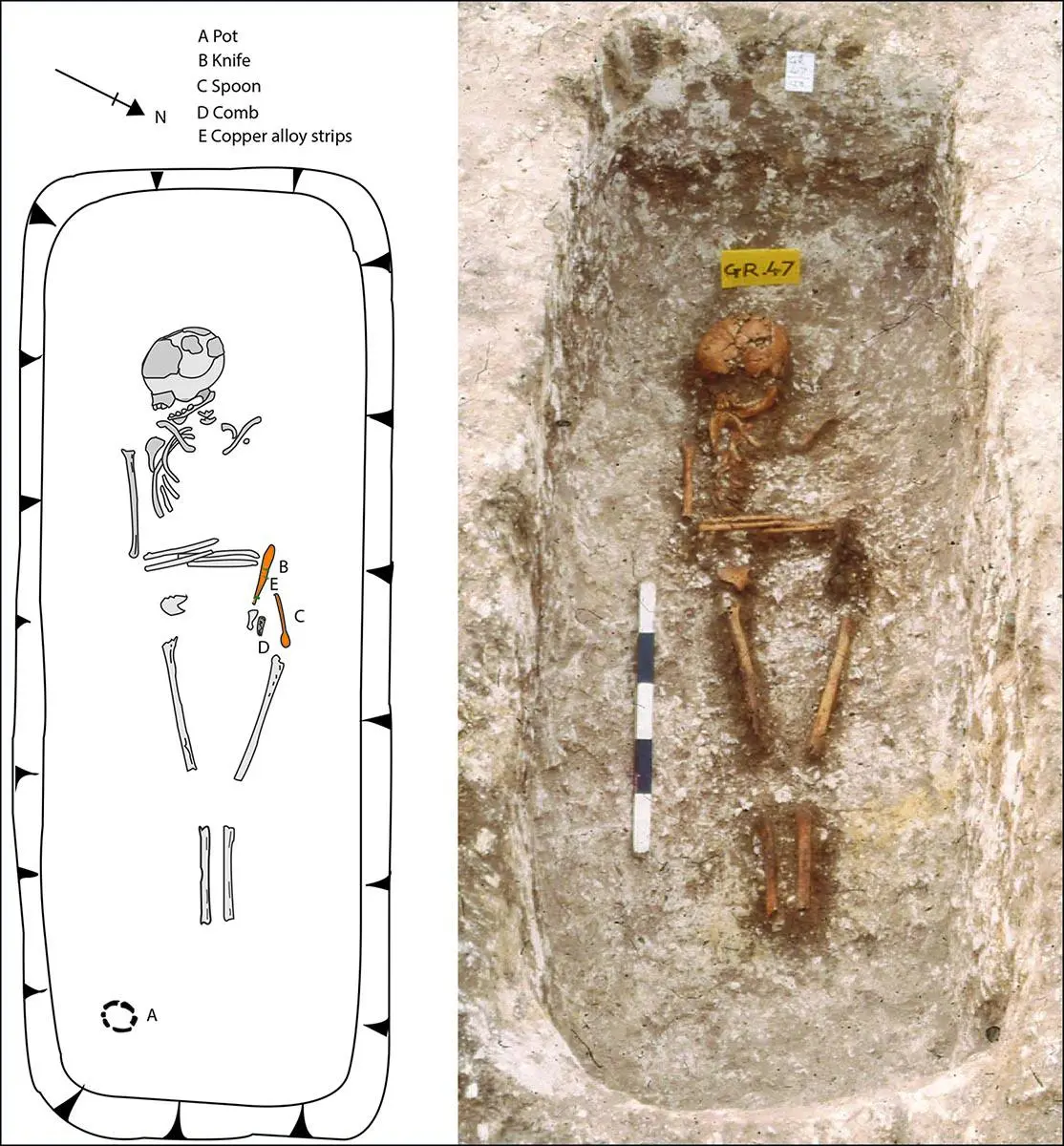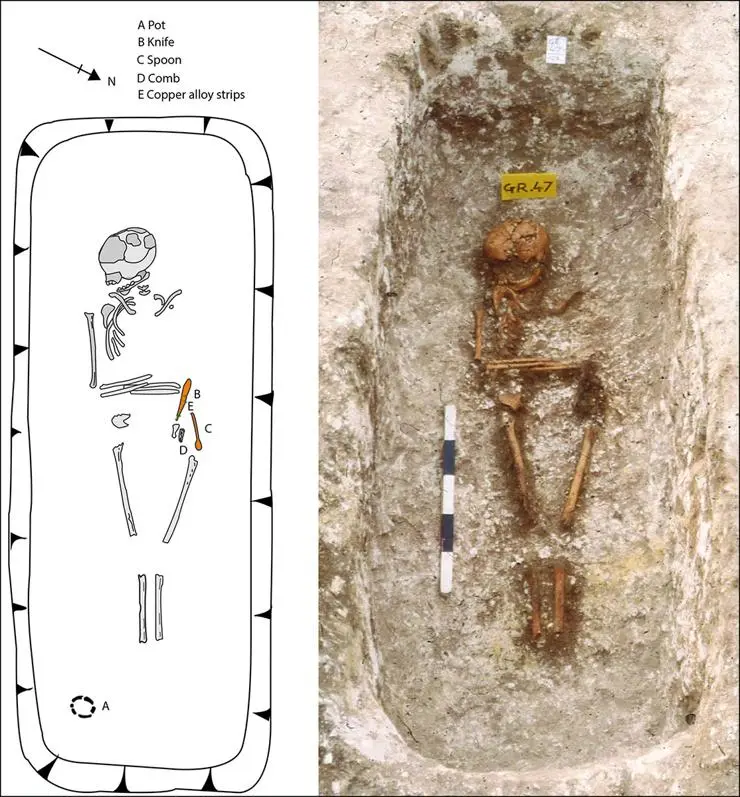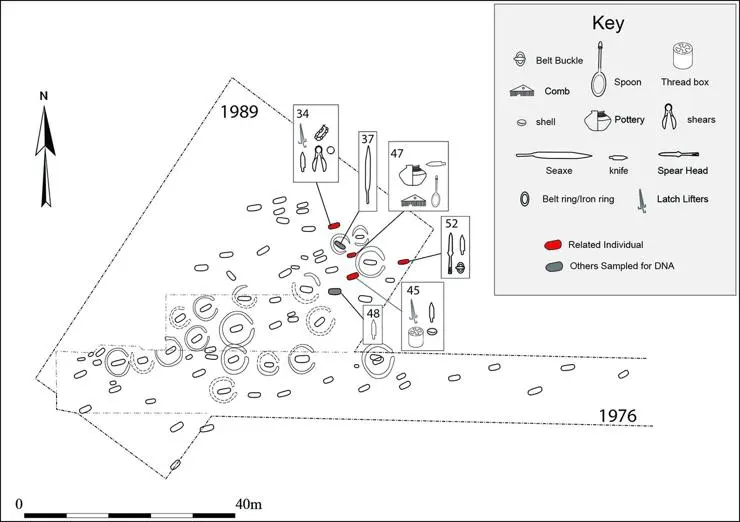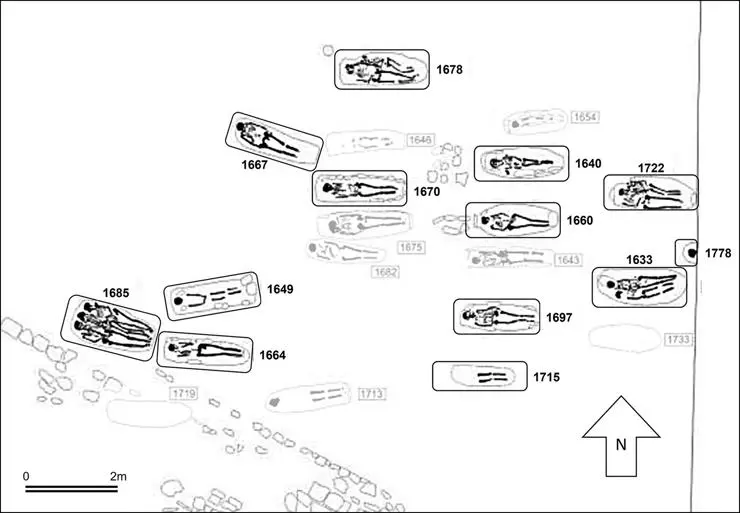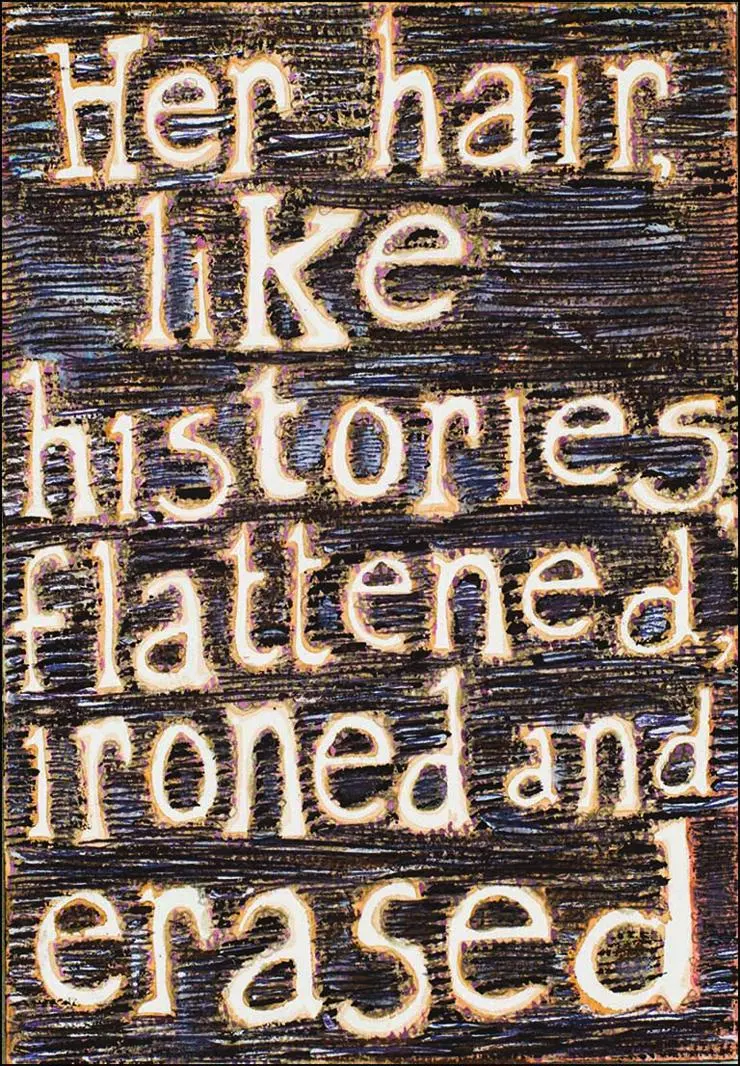- Ancient DNA analysis uncovers evidence for West African ancestry in two unconnected burials from seventh-century-AD England.
- In both individuals, their African ancestors were recent, likely at the grandparent level.
- Whilst one cemetery showed royal connections to continental Europe, the other was on the fringes of the Anglo-Saxon world.
- This is the first evidence for genetic connections between Britain and Africa during the Early Middle Ages.
Archaeologists have analysed the DNA of two unrelated individuals buried in seventh- century-AD cemeteries on the south coast of England, revealing that they both had recent ancestors, likely grandparents, from West Africa.
During the Early Middle Ages, England saw significant migration from continental northern Europe. Historical accounts describe the settlement of Angles, Saxons, and Jutes, who gave their names to the Anglo-Saxon period and perhaps the country itself. However, the extent of movement from further afield was less clear.
“Migration and its direction, scale and impact have been much debated in European archaeology,” state the authors. “Archaeogenetic research can now provide new insight, even identifying individual migrants”.
Therefore, to shed more light on migration in early medieval Europe, researchers from several universities performed ancient DNA analysis on individuals buried at two seventh-century AD cemeteries on England’s south coast: Updown in Kent and Worth Matravers in Dorset. Their results are published in two articles in the journal Antiquity, one on each cemetery.
Kent has always been a conduit for influence from the adjacent continent and this was particularly marked in the sixth century – what might be termed Kent’s ‘Frankish Phase'.– Professor Duncan Sayer, from the University of Central Lancashire, lead author of the Updown article
“Kent has always been a conduit for influence from the adjacent continent and this was particularly marked in the sixth century – what might be termed Kent’s ‘Frankish Phase”, said lead author of the Updown article, Professor Duncan Sayer from the University of Lancashire. “Updown is also located near to the royal centre of Finglesham, indicating that these connections were part of a wider royal network.”
“In contrast, Dorset sat on the fringes of continental influence”, added lead author of the Worth Matravers article, Dr Ceiridwen J. Edwards from the University of Huddersfield. “The archaeological evidence suggests a marked and notable cultural divide between Dorset and areas to the west, and the Anglo-Saxon influenced areas to the east.”
Whilst the majority of the individuals buried at the cemeteries had either northern European or western British and Irish ancestry, which were both prevalent in England at the time, one person at each cemetery had a recent ancestor from West Africa.
In each individual, their mitochondrial DNA (inherited from the mother) was northern European, but the autosomal DNA (from both parents) showed clear signs of non- European ancestry with affinity to present-day Yoruba, Mende, Mandenka, and Esan groups from sub-Saharan West Africa.
The archaeological evidence suggests a marked and notable cultural divide between Dorset and areas to the west, and the Anglo-Saxon influenced areas to the east.– Lead author of the Worth Matravers article, Dr Ceiridwen J. Edwards from the University of Huddersfield
This indicates that both individuals had genetically and geographically mixed descent, in contrast to the rest of the people buried at the two cemeteries. Further investigation suggests that they both had one paternal grandparent from West Africa.
The Updown grave contains several goods, including a pot possibly imported from Frankish Gaul, and a spoon that could indicate the individual’s Christian faith and/or connections to the Byzantine Empire. The Updown cemetery was part of Kent’s royal network and these goods, and other genetic indicators, point to Updown’s continental connections.
Conversely, the individual at Worth Matravers was buried alongside a male with British ancestry and an anchor made of local limestone. However, in both cases, the fact that both individuals were buried as typical members of their communities indicates that they were valued locally.
Importantly, this adds a new dimension to understanding long-distance movement and demographic interaction involving Britain during the Early Middle Ages. “Rarely does a volunteer-led project have the good fortune to be associated with a study incorporating the latest cutting-edge analysis of aDNA”, said director of the excavations at the post-Roman site of Worth Matravers, Lilian Ladle, FSA, MBE.
It is significant that it is human DNA—and therefore the movement of people, and not just objects—that is now starting to reveal the nature of long-distance interaction to the continent, Byzantium and sub-Saharan Africa.– Professor Duncan Sayer, from the University of Central Lancashire, lead author of the Updown article
“This study has greatly enhanced our interpretation of the archaeological results by revealing not only fascinating family dynamics, but also exciting long-distance links between groups and individuals”.
“It is significant that it is human DNA—and therefore the movement of people, and not just objects—that is now starting to reveal the nature of long-distance interaction to the continent, Byzantium and sub-Saharan Africa”, added Professor Sayer.
“What is fascinating about these two individuals is that this international connection is found in both the east and west of Britain. Updown is right in the centre of the early Anglo-Saxon cultural zone and Worth Matravers, by contrast, is just outside its periphery in the sub- Roman west.”
“Our joint results emphasise the cosmopolitan nature of England in the early medieval period, pointing to a diverse population with far-flung connections who were, nonetheless, fully integrated into the fabric of daily life,” Dr Edwards concluded.
The research is detailed in two research articles:
West African ancestry in seventh-century England: two individuals from Kent and Dorset
Ancient genomes reveal cosmopolitan ancestry and maternal kinship patterns at post-Roman Worth Matravers, Dorset
Discover more about archaeology
- Subject
Archaeology
- Course
Archaeology, BSc (Hons)
